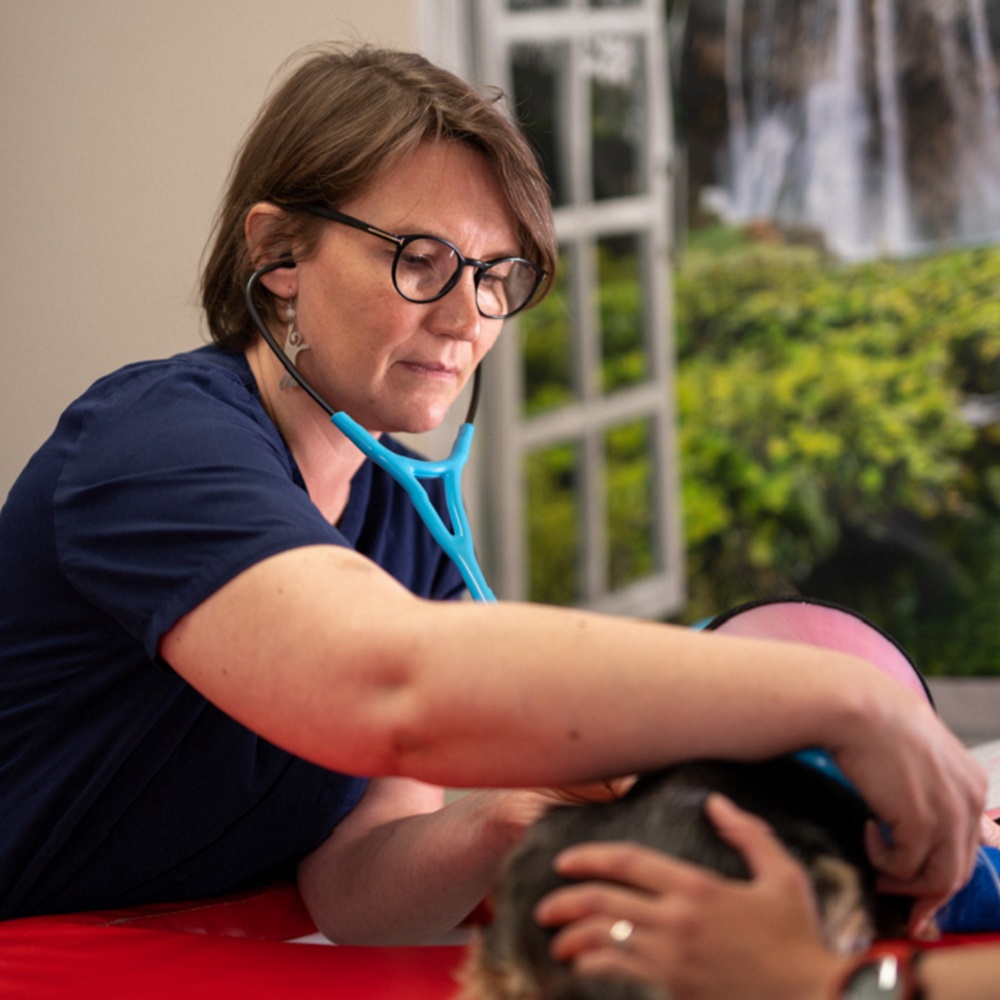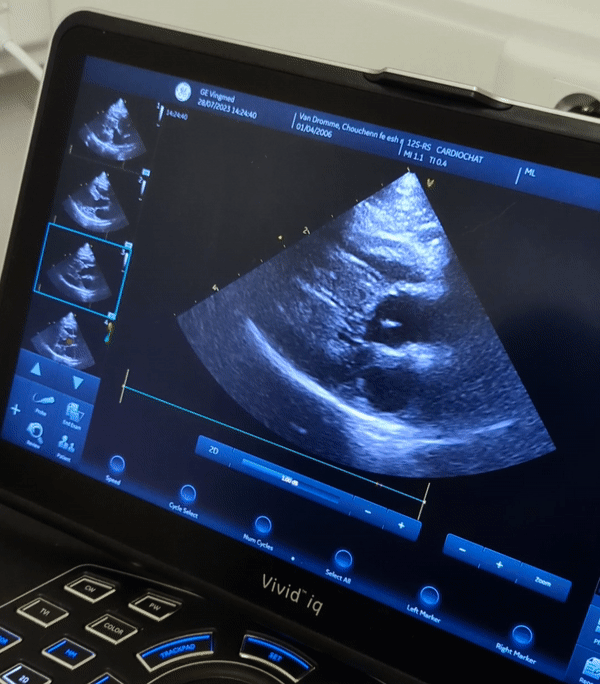Cardiology and echocardiography

What is an echocardiogram?
Echocardiography is an ultrasound examination of the heart. It is used to evaluate cardiac function through a number of measurements, and to predict the evolution of a pathology.
When you last examined your pet, did the veterinarian you met advise you to make an appointment for an echocardiogram?
Here’s some information on the procedure, why it’s advisable and the most common cardiac pathologies encountered in dogs and cats.
The procedure
An echocardiogram is an ultrasound examination of the heart. This examination enables us to visualize the heart as a whole, with its different chambers, as well as normal and abnormal blood flow between the different chambers. It enables us to assess cardiac function through a number of measurements, and to predict the evolution of a pathology, enabling us to prolong the patient’s life by adapting treatment to real-time observations. This examination is painless, but sometimes uncomfortable, because the patient must be kept lying on his or her side on a perforated table, for around ten minutes on each side. One of our assistants is always on hand to help the veterinarian, and all you have to do is reassure him or her. An electrocardiogram (ECG) is usually performed at the same time. Depending on the pathology diagnosed and monitored, other examinations may be recommended/performed, such as chest X-rays, pressure measurements or blood tests. For this reason, we recommend that you bring your pet with you on an empty stomach: it can drink as much as it likes, but must not have eaten anything for at least 4 hours. Most patients accept the procedure, and sedation is rarely required. If sedation is required, the risk associated with sedation is weighed against the benefit of the examination, in consultation with the attending veterinarian.


Indications for a cardiac examination
Your pet may be referred for a cardiac examination in two situations:
- He has no symptoms, but an abnormality has been detected on auscultation: in this case, it’s important to understand why the auscultation is abnormal, so that you can monitor and treat your pet as effectively as possible.
- Your pet has shown symptoms suggestive of a cardiac disorder: coughing (especially in dogs), breathing difficulties, weakness, syncope, accumulation of abdominal fluid, cyanosis… In these cases, the examination will enable a precise diagnosis to be made, as well as the implementation of appropriate treatment and follow-up, and the determination of a prognosis.
Heart disease in dogs and cats
Cardiac pathology can be congenital (malformation) or acquired.
Congenital pathologies are quite similar in dogs and cats: persistence of the ductus arteriosus, interventricular or interatrial communication, stenosis of the large vessels, or other complex pathologies such as tetralogy of Fallot.
Acquired pathologies, on the other hand, are very different from one species to another, as cats are nothing like small dogs: in dogs, the population is clearly divided into

Small and medium-sized dogs
By far the most frequent pathology is degenerative valve disease, which affects a large proportion of the population of small, older dogs, but can also affect medium-sized or large dogs, or middle-aged dogs (the Cavalier King Charles is particularly predisposed). It involves mitral or tricuspid valve deficiency, or both.

Big dogs and giant breeds
The most common pathology is dilated cardiomyopathy. This pathology can also affect small- and medium-breed dogs, but predominates in large dogs. The Doberman, Boxer and Great Dane are among the many breeds at risk. It’s a heart muscle deficiency, often with a genetic component.

In cats
Acquired pathologies are all part of the cardiomyopathy family, so it is the heart muscle that is affected, and which can become thicker (hypertrophic cardiomyopathy), more rigid (restrictive cardiomyopathy) or thinner and ineffective (dilated cardiomyopathy).
The treatments are individually adapted to each patient, and can never be transferred from one patient to another without additional examination.
The diagnosis, early treatment and monitoring of cardiac patients makes it possible to guarantee a good quality of life for your companions, for as long as possible… A cardiac pathology is present for the rest of the animal’s life, unless rare operable exceptions. The cardiologist establishes a privileged link with his patients and their owners, in order to allow optimal and humane monitoring…
